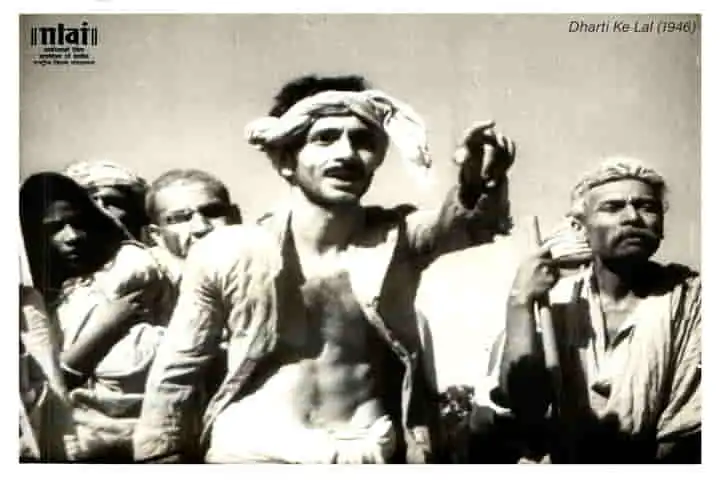Culture is an important element which helps cement relations between two nations. In the case of the bilateral association of India and Russia, cinema has played a major role ever since the former became independent in 1947.
In 1949, “Dharti Ke Lal” was the Indian film to be imported by the Soviet Union.
Described by the New York Times as “a gritty realistic drama”, the film was a scathing view of the notorious Bengal famine of 1943, the film was the first directorial Khwaja Ahmad Abbas. Having suffered much, it made a place for itself among the people.
“Chinnamul” was the second film, which was in Bangla, to be screened in 1949 in the Soviet Union and it dealt with the Partition of India and was directed by Nemai Ghosh.

Raj Kapoor and Nargis in 'Awaara'
Raj Kapoor, one of the three legendary actors, the other two being Dilip Kumar and Dev Anand, was the one who became a raving hit in the USSR. His “Awaara” (1951) was dubbed in Russian and released as “Brodiaga” (or the Vagabond). Based on Socialist themes, it is a blend of romantic comedy, crime and musical genres. The title song “Awaara hoon”, written by Shailendra and sung by Mukesh, became very popular in the Soviet Union.
Kapoor’s “Shree 420” in 1955 cemented his position as the darling of Soviet cinema buffs with the iconic song “Mera Joota Hai Japani” (sung by Mukesh) becoming the anthem in USSR. This comedy-drama directed by K.A. Abbas, the storyline is about how educated Kapoor is, seduced by an easy way of crime and later decides to set things right.
Much later, in 1975, “Bobby”, debut film of Raj Kapoor’s son Rishi Kapoor too had cinemagoers queuing up in front of the ticket counter. With a Cinderella plot as the pivot, it had Rishi, playing a handsome and rich boy falling in love with beautiful Dimple Kapadia, who was below his economic and social status.

A scene from 'Bobby' starring Dimple Kapadia and Rishi Kapoor
Among the other films which pulled the heartstrings of Soviet cinema lovers was “Seeta Aur Geeta”. A superhit starring Hema Malini in double role, this 1972 comedy-drama film was penned by Salim-Javed and directed by Ramesh Sippy of “Sholay” fame. The plot was about identical twins with different temperaments essayed by Hema Malini, who swap places. The male leads were essayed by Sanjeev Kumar and Dharmendra.

Realising the popularity of the film when she visited Russia during the 4th Indian Film Festival of Russia, Hema Malini told the media: “People in Russia are still crazy about this film. They pronounce it Zeeta Aur Geeta as they cannot pronounce Seeta Aur Geeta! I assume that if I make a sequel of the film even after all these 40 years, my Russian fans will be the first ones to go and watch it.”
Among the other films which left a mark in USSR were Suchitra Sen, Ashok Kumar and Dharmendra starrer “Mamta” in 1969 along with another of Dharmendra hit film “Phool Aur Pathar” in which he teamed with Meena Kumari.
In 1982, Mithun Chakraborty’s “Disco Dancer” became a cult and its song “Jimmy, Jimmy, Jimmy, Aaja, aaja, aaja”, an anthem. It is still watched on Youtube by today’s generation, with people singing the song “Jimmy, Jimmy, Jimmy…” with a karaoke machine. The film grossed $76 million when released in Soviet theatres in 1984.
Among the three reigning Khans of Bollywood, it is Shah Rukh Khan who has a huge fan following in Russia and also some of the former USSR republics. With several fan pages dedicated to him, youngsters often mouth dubbed dialogues from his hit films like “Dilwale Dulhania Le Jayenge”, “Kuch Kuch Hota Hai” and “Devdas”, among others.
There were joint productions of films also between the two countries. In 1957 Abbas directed the Hindi version of one such venture. It was titled “Pardesi” and was based on Russia’s adventurer-traveller Afanasy Nikitin played by Oleg Strizhenov. It also starred Nargis.

A scene from 'Pardesi'
The Indian films have played the perfect role of soft power in the India-Russia relations. In her article Natalya Fedotova quotes Maria Sergeyeva, a modern fan of Indian cinematography stating: "Russians like Indian cinema for its cheeky optimism. No matter how difficult the trials, no matter what surprises life brings, everything will still be fine in the end.”




















